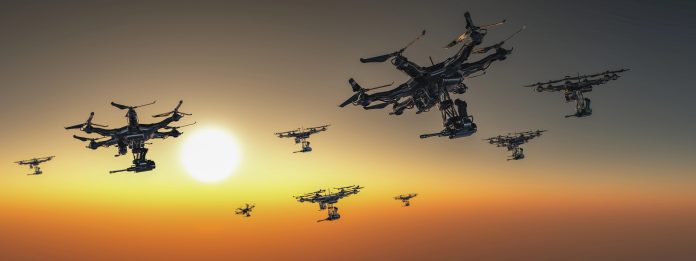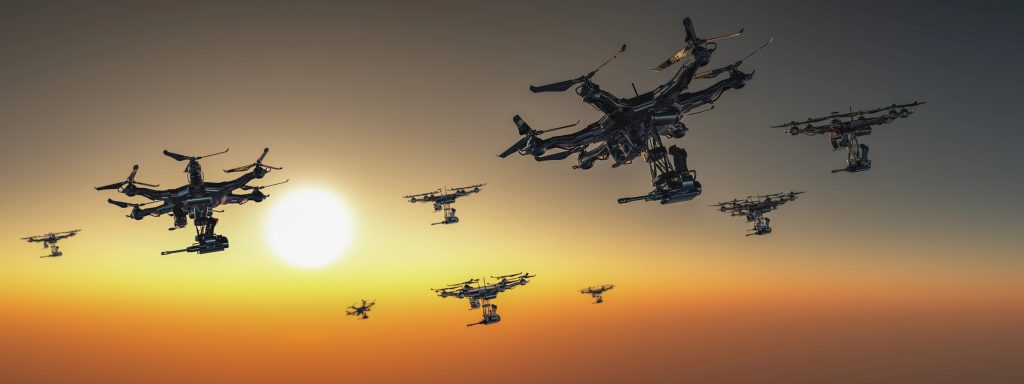
“Words are extremely important, and oftentimes they cause ramifications that are not intended, I hope this will not be one of them.” In this remark, Donald Trump highlighted the fine line between power and perception as he directed the redeployment of two US nuclear submarines in reaction to an angry spat with Russia’s Dmitry Medvedev. The action, while highly symbolic, has sparked new criticism of strategic deterrence, the changing face of drone warfare, and the pressing need for indigenous weapons production in Ukraine.
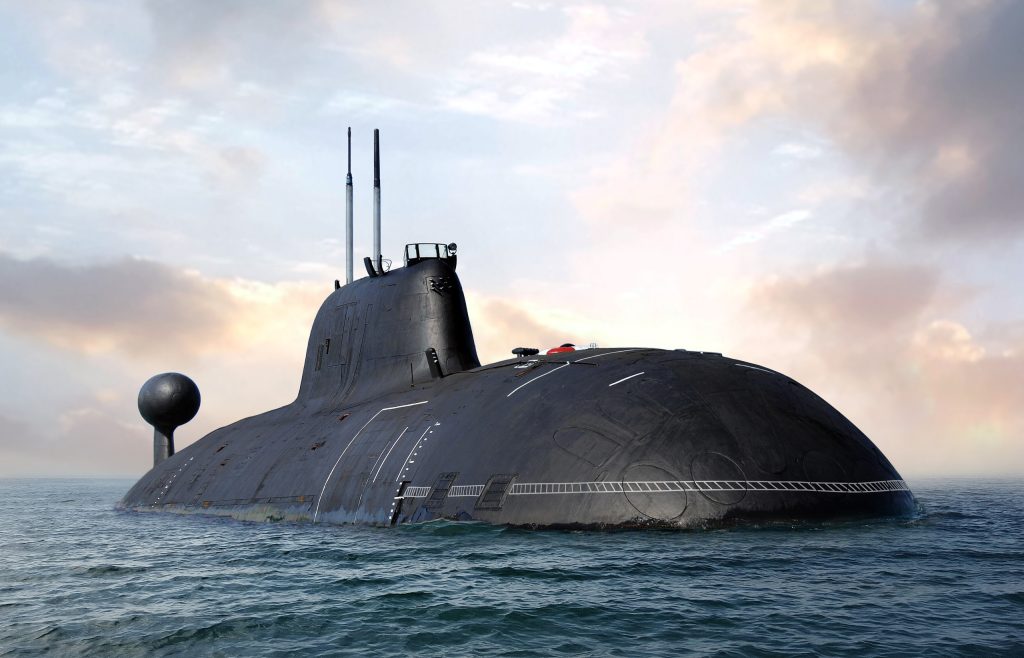
1. The Strategic Calculus Behind Trump’s Submarine Order
Trump’s order to send two nuclear submarines to “appropriate regions” was a reaction to Medvedev’s threats and a widerexasperation with stalled peace talks. Although the precise class and whereabout of the submarines are still classified, defense analysts nearly unanimously identify the Ohio-class ballistic missile submarines (SSBNs) as the probable assets used. The submarines are the backbone of the US nuclear triad, with each submarine capable of carrying 20 Trident II D5 submarine-launched ballistic missiles, where each missile can deliver several independently targetable warheads across continents. As the US Navy Fact File adds, “The Navy’s ballistic missile submarines, also known as ‘boomers,’ are an undetectable launching platform for submarine-launched ballistic missiles (SLBMs). They are built for stealth and the accurate delivery of nuclear warheads.” The operating doctrine guarantees that eight or ten Ohio-class SSBNs are on round-the-clock deterrent patrol at all times, their whereabouts a closely kept secret.

The technical capabilities of these submarines are impressive. 560 feet in length and displacing almost 19,000 tons when submerged, the Ohio-class is designed for stealth, using sound-insulated machinery, anechoic tile coatings, and low- noise propulsion to remain undetected. Their patrols last up to 77 days, with double crews ensuring maximum operational availability. Their primary weapon, the Trident II D5 missile, has a range of over 7,400 kilometers and a CEP of under 90 meters, with both reach and precision. As Hans Kristensen of the Federation of American Scientists noted, “The subs are always there all the time and don’t need to be moved into position.” He gives Medvedev a response to these bonkers comments. Trump’s directive was as much a move in military posture as it was a deliberate act of strategic signaling, one that traded on the psychological leverage of the US Navy’s most survivable deterrent.
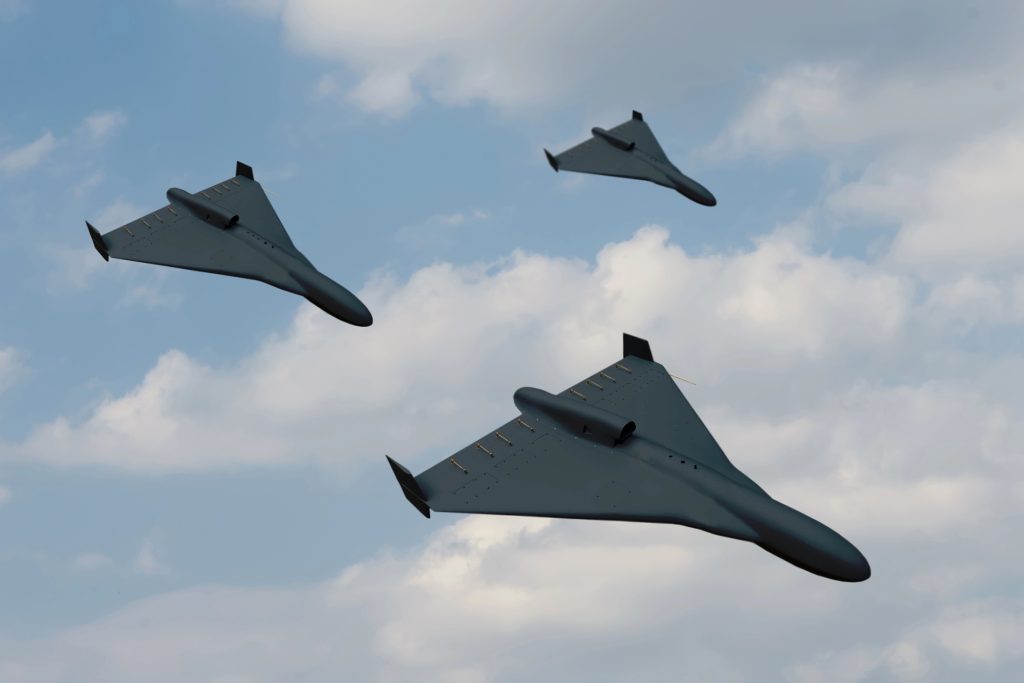
2. Russia’s Shahed Drone Campaign: Scale, Tactics, and Impact
As nuclear brinkmanship fills the headlines, the everyday life of the Ukraine conflict is increasingly shaped by unmanned aerial systems. In July 2025, there was a dark milestone: Russia deployed more than 6,000 drones against Ukraine in one month alone, of which more than 6,100 were Shahed-type loitering munitions. These Iranian-built but Russian-manufactured drones, labeled “the poor man’s cruise missile,” are prized for their affordability (estimated between $20,000 and $50,000 per drone), ability to travel long distances (as much as 2,000 kilometers for the Shahed-136), and ease of mass production and deployment. The Shahed-136 is equipped with a piston engine, cruises at approximately 185 km/h, and has a warhead of about 40–50 kg, with Russian variants having warheads as high as 90 kg and fragmentation or thermobaric effects tailored to purpose.
Russia’s new strategies now involve saturating Ukrainian air defense systems through concentrated attacks against a single city or two cities at a time, using both high-altitude and ultra-low-level flight profiles to bypass detection and interception. Ukrainian defense sources say, “These drones now fly either very high, at altitudes above 3-4 km, or extremely low over the ground, near the roofs of apartment buildings.” The effect is a sharply raised hit rate: Ukrainian Air Force statistics show that roughly 15 percent of Shahed drones broke through defenses between April and June 2025, compared to only five percent in the last quarter. The psychological impact is equally profound, with the persistent “buzzing” of drone engines likened to the terror of WWII-era V-1 flying bombs.
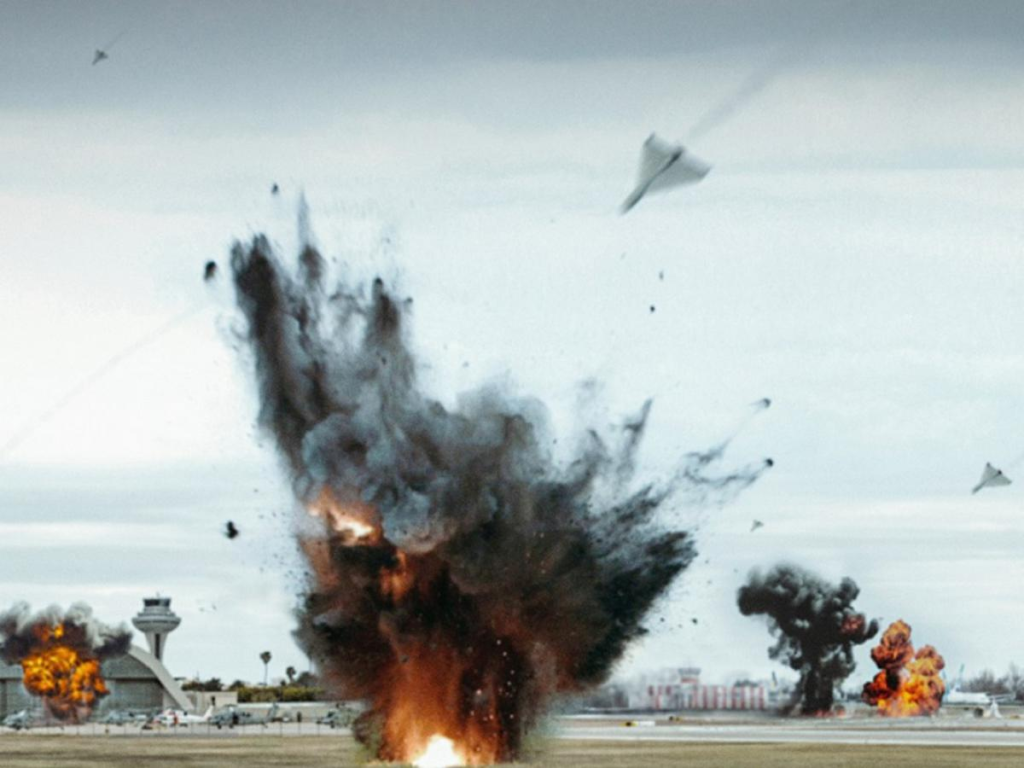
A new threat has emerged in the form of the jet-powered Shahed-238, capable of speeds exceeding 500 km/h and altitudes up to six miles. As Ukrainian Air Force spokesman Yuri Ignat explained, “In essence, on radar it is indicated as a cruise missile by flight characteristics, because the speed there can be 500-plus kilometers per hour (310mph). Not everything we use today is capable of intercepting such targets.” These technologies compel Ukraine to waste valuable, costly surface-to-air missiles like the $4 million Patriot PAC-3 or $500,000–$1 million AIM-120 AMRAAM against drones that are a fraction of the cost to manufacture.
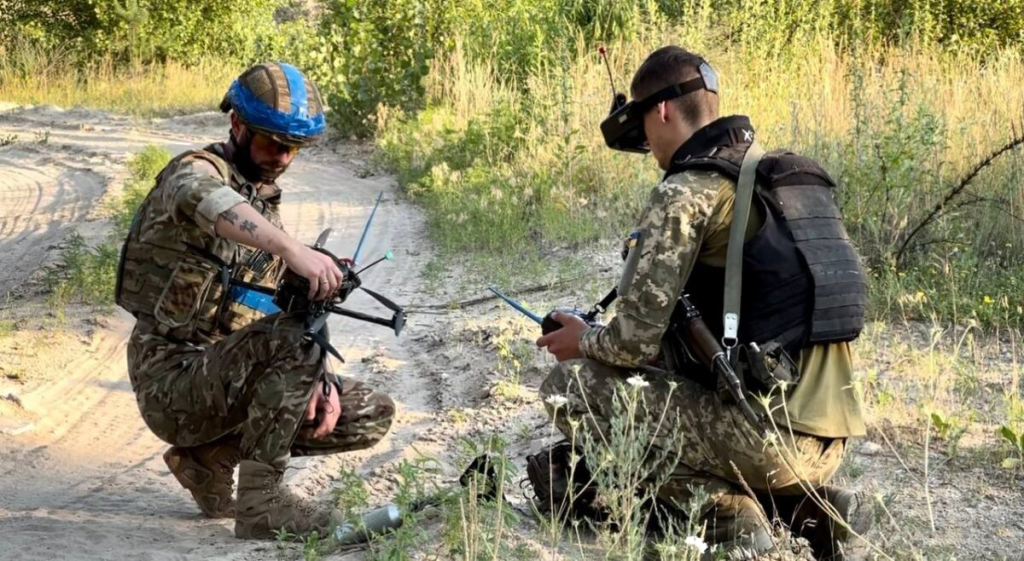
3. Ukraine’s Indigenous Response: Innovation Under Fire
With constant drone rain and faltering Western aid, Ukraine has geared up to develop weapons locally. The upgrade is astounding: from a few drone-makers in 2022, Ukraine today has some 500 companies, with monthly production of basic FPV drones jumping from 20,000 units in 2024 to 200,000 per month in 2025. President Zelensky is aiming high with four million drones a year, backed by state-led developments such as the Brave1 tech incubator and the “Army of Drones” crowdfunding initiative.
Ukrainian engineers have developed a new generation of interceptor drones FPV models with speeds above 200 km/h and altitudes of up to 6 km, designed with terminal guidance and warheads suited to annihilate incoming Shaheds. These drones are just a fraction of the cost of conventional interceptors and can be mass-produced and fielded quickly. As Anvarix CEO Olha Bihun explained, “The bigger the target, the bigger the warhead needed for more precise detonation.”Since you can shoot at a wing, but it will only detach it and not kill the target itself. The Azov Brigade and other formations are actively recruiting operators and technical support units to expand these capabilities, combining legacy air defense assets with new autonomous platforms and digital solutions.
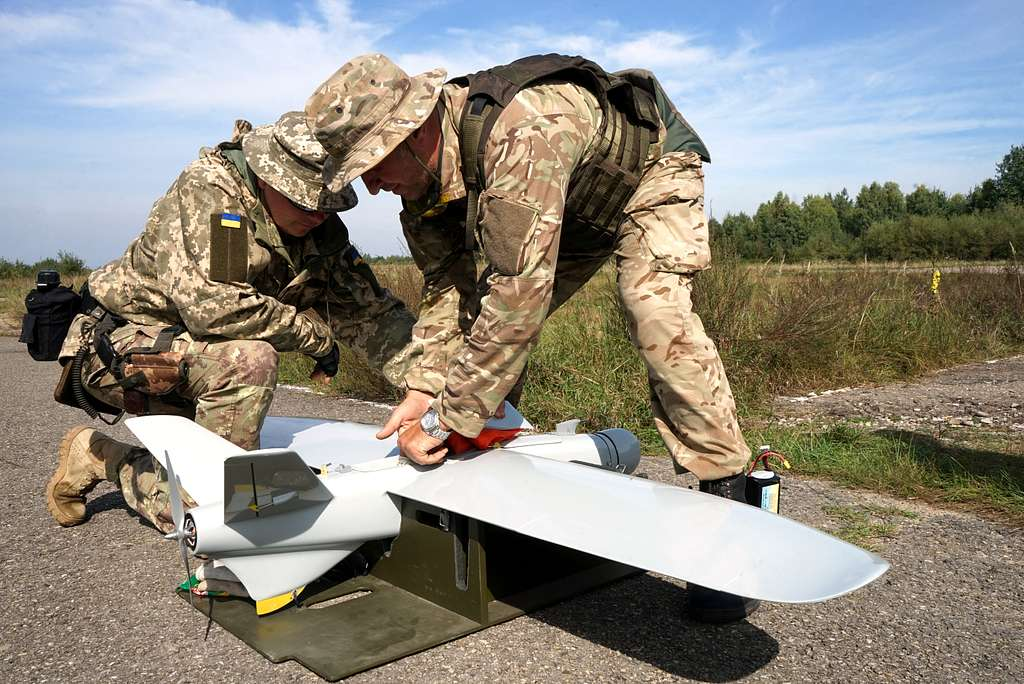
Ukraine’s innovation goes further than just air systems. The nation has revived and decentralized its heritage defense sector, and hundreds of state-owned and private firms currently make everything from armored vehicles to long-range missiles. Ukraine’s “Operation Spiderweb” in June 2025, in particular, showed the strategic depth of locally made drones, as FPV quadcopter swarms launched from within Russian-held ground destroyed 41 planes at four airbases, including strategic bombers. This action, which involved 117 drones and operators, was trumpeted by President Zelensky as a “brilliant” demonstration of asymmetric warfare, and outside experts estimate that perhaps 34% of Russia’s strategic bomber force was damaged in an overnight raid.
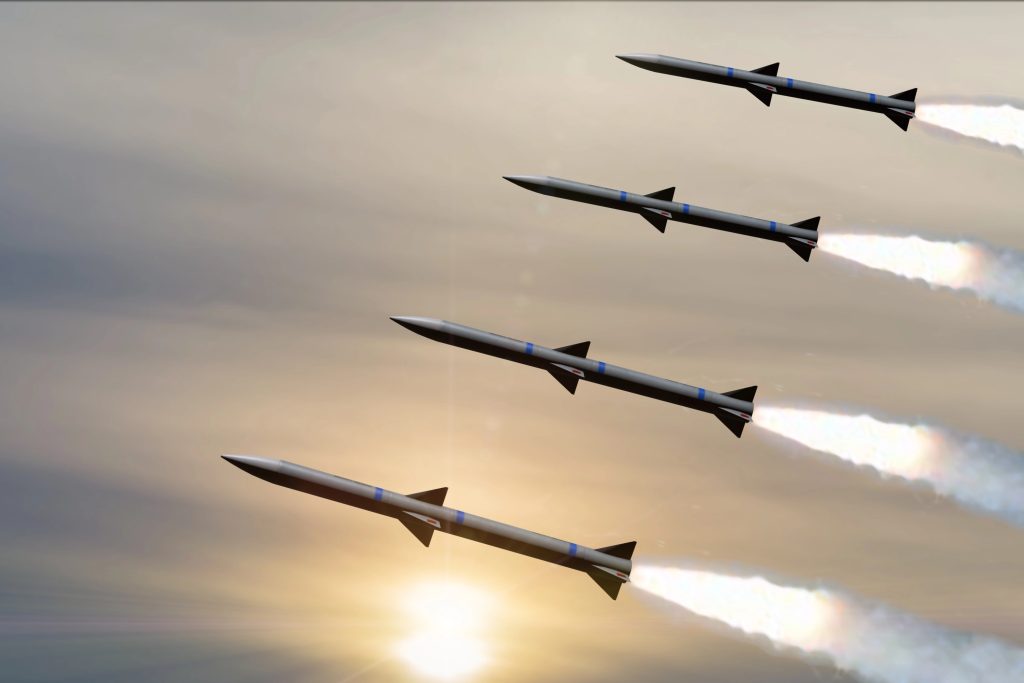
4. The Arms Industry at a Crossroads: Self-Sufficiency and Western Partnerships
The Ukrainian drive for self-sufficiency is both a matter of necessity and a strategic goal. The conflict has accelerated domestic production of arms, where output has risen 35 times in three years and the number of state and private weapons companies has reached almost 800. The Ministry of Strategic Industries, headed by Herman Smetanin, has focused development on indigenous missile systems like the Neptune, Palyanytsia, Peklo, Ruta, and the hybrid “Bars” missile, which brings together drone and cruise missile technologies for up to 800 km. Adviser Yuri Sak told, “Despite the war, despite the missile attacks, despite the hundreds of Shahed drones that are being launched against Ukraine pretty much every night, we were able to boost our defence industry production by 35 times in the last three years.”

But there are still challenges. Ukraine’s defense industry remains crippled by legacy inefficiencies, supply chain disruptions due to Russian raids, and persistent dependence on Western assistance for essential components and high-end systems. Foreign partnerships have become crucial, with Western companies setting up joint ventures and local manufacturing bases, and allied governments committing billions to support Ukraine’s growing drone sector. However, as Sak pointed out, “We attempt to be as discreet as possible regarding the places of our defence industry. Where feasible, we have re-opened existing installations that had been inactive for the past 20-plus years and, in other instances, we are constructing new facilities. All this is done in secret because the Russians are aiming at our defence industry businesses.”

Decentralization of production diversification of manufacture among several hidden locations has become a signature of Ukrainian resilience, providing continuity even in the face of constant attack. Quality control, standardization, and the adoption of NATO standards are now a focus as Ukraine wants to become a center of defense technology in the future.
The relationship between strategic deterrence, drone war, and native ingenuity is reshaping the conflict in Ukraine. The quiet cruises of Ohio-class submarines, the incessant suicide swarms of Shahed drones, and the speeded-up technology development of Ukraine’s military industries as a whole constitute a fundamental transformation in the nature and practice of contemporary war.
